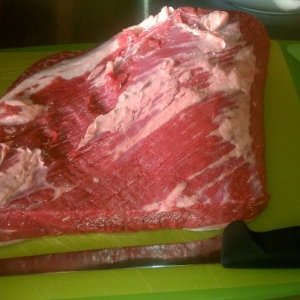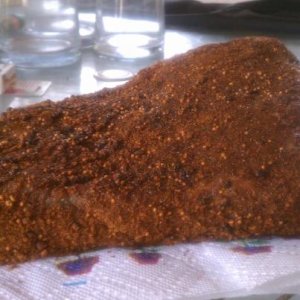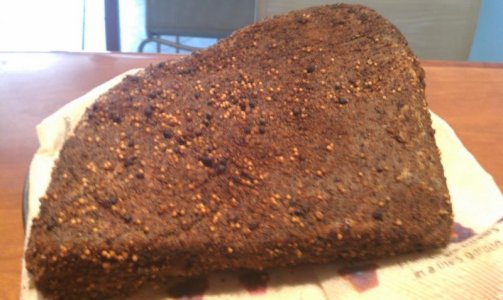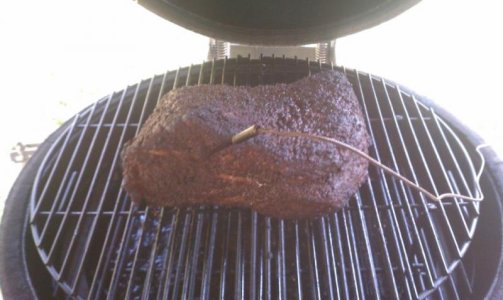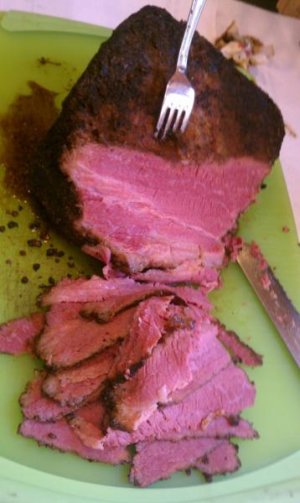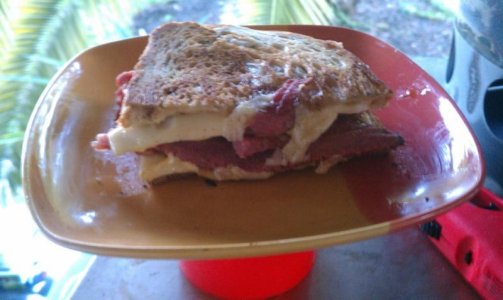- Joined
- Feb 24, 2013
- Messages
- 4,846
- Reaction score
- 7,729
- Points
- 0
- Age
- 66
- Location
- Port Charlotte, Florida
Thanks to all of you fine folks and the many posts I have read through, I am happy to say my quest for the ultimate Pastrami will soon be at hand. After much reading and hemming and hawing over the right cut of brisket to use, I opted for the Point Deckle. After the butcher shop it was on to my favorite German sausage shop for some brine and then home to do very little trimming as the butcher did most of that already. I mixed the brine and pickling spices in a 12 qt. Cambio tub and then placed the brisket into the brine, closed it up with the lid, and left it in my walk-in for 5 days. Yesterday, I removed it from the brine and applied a rub and then it was back into the walk-in for another stage of dry aging. My question is this, how long can I hold this brisket in the walk-in @ 38 degrees? Is there any advantage to keeping it on hold longer? I am anxious to smoke it and try it!
Any advice from Pastrami fans is welcomed!
Any advice from Pastrami fans is welcomed!


